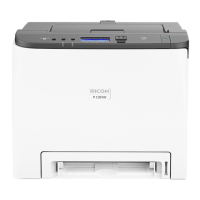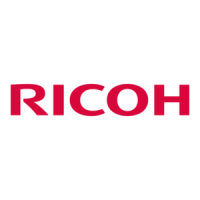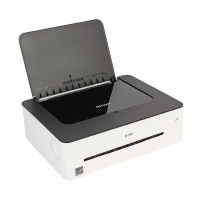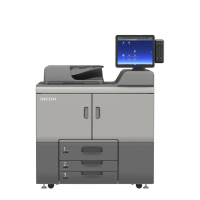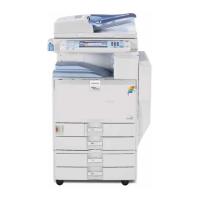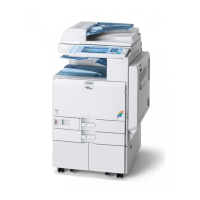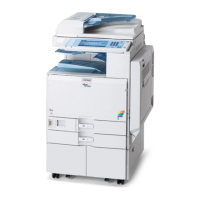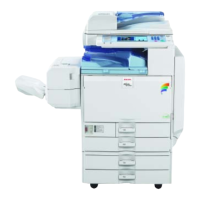7.Detailed Descriptions
269
Process Control
Process Control Flow
Process control adjusts imaging processing conditions as required to maintain constant, uniform image
density. Process control comprises toner coverage control and MUSIC (Mirror Unit Skew and Interval
Correction) which ensures consistent color overlay.
Toner Coverage Control
1. The machine uses the temperature and humidity readings of the temperature/humidity sensor to
determine the correct bias for the application of charge to the surface of the drum to ensure that
the surface potential of the drum remains constant.
2. The machine creates differ toner patch patterns on the surface of the image transfer belt by varying
the bias charge, and then the TM/P sensor detects the amount of toner coverage in each patch to
determine the target development bias for optimum toner coverage. This is toner coverage process
control.
3. Next, a range of halftone toner patches are created on the image transfer belt by varying the
strength of LD exposures, the densities of these images are detected by the TM/P sensor, and then
the machine determines optimum LD power levels for creating the optimum densities for halftone
images. This is halftone process control.
MUSIC
In the MUSIC phase, first correction patterns are generated on the image transfer belt then the TM/P
sensors read the patterns. The machine uses these readings to measure and then correct the
positioning of the images exposed on the image transfer belt. (Refer to, MUSIC (Mirror Unit Skew and
Interval Correction))
TM/P Sensors
Three TM/P sensors are on a single board. The center sensor acts as an ID sensor and a MUSIC
sensor. The left and right sensors are used only for MUSIC.
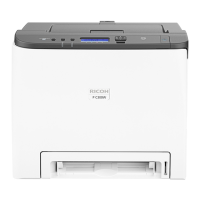
